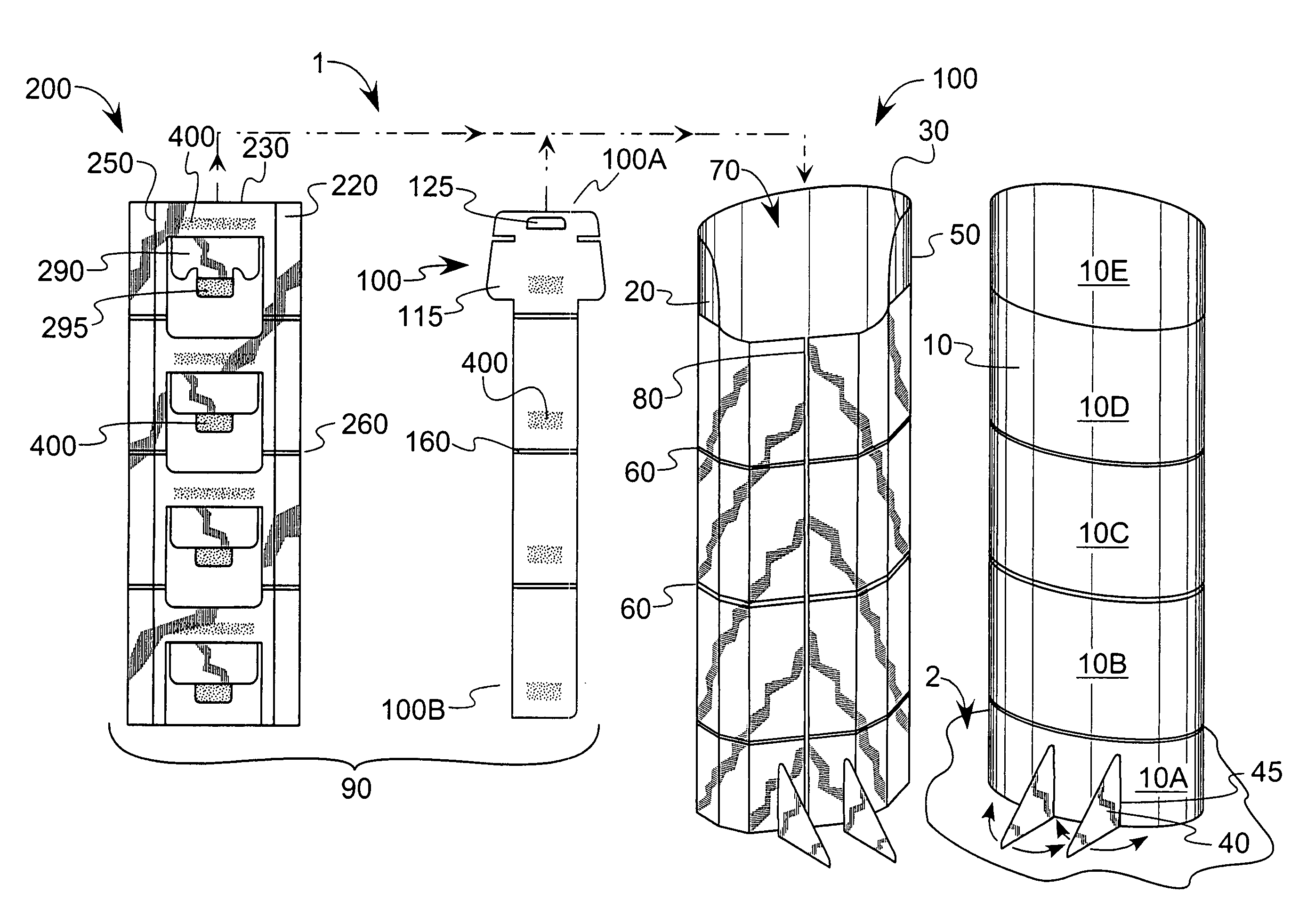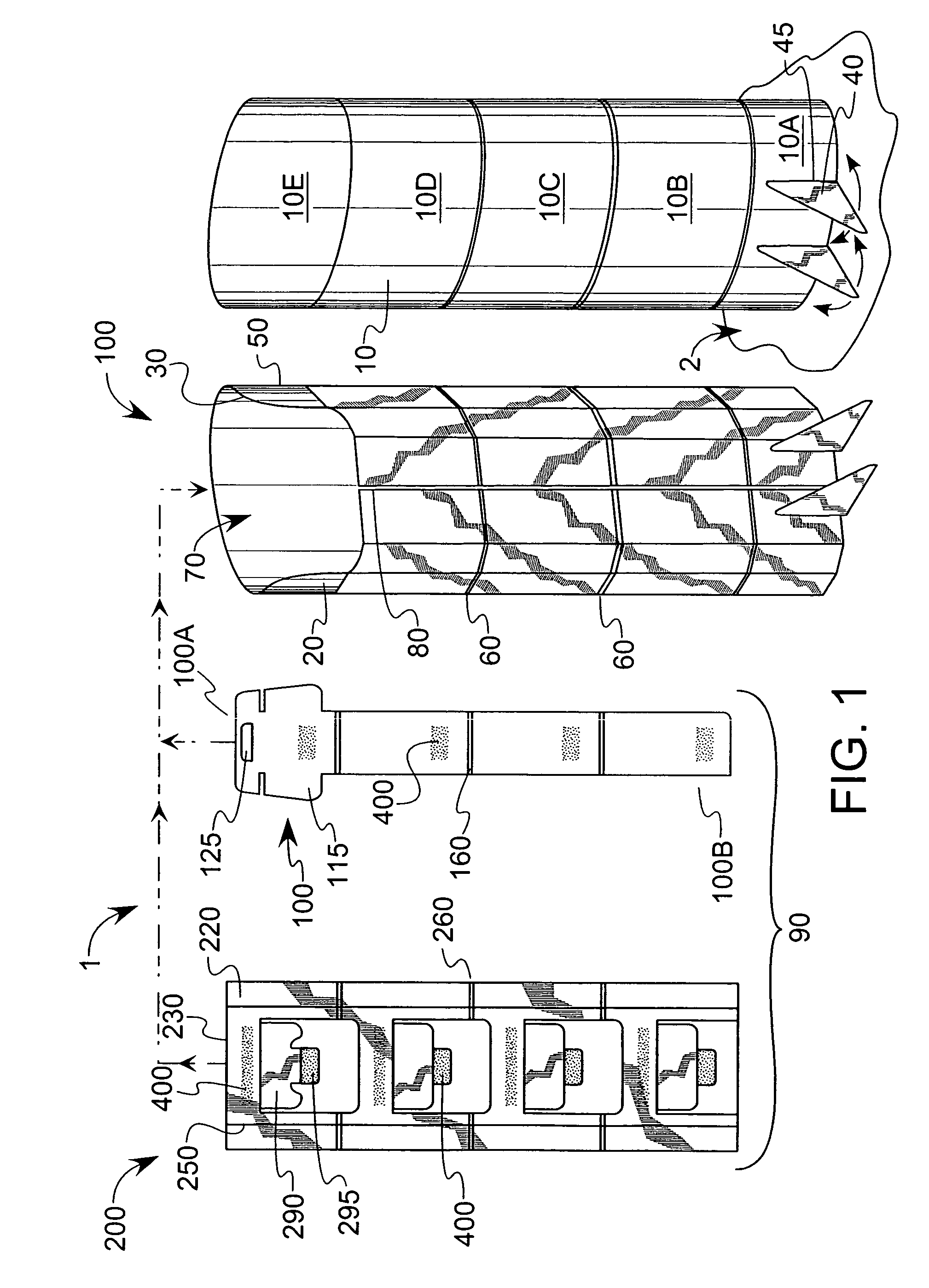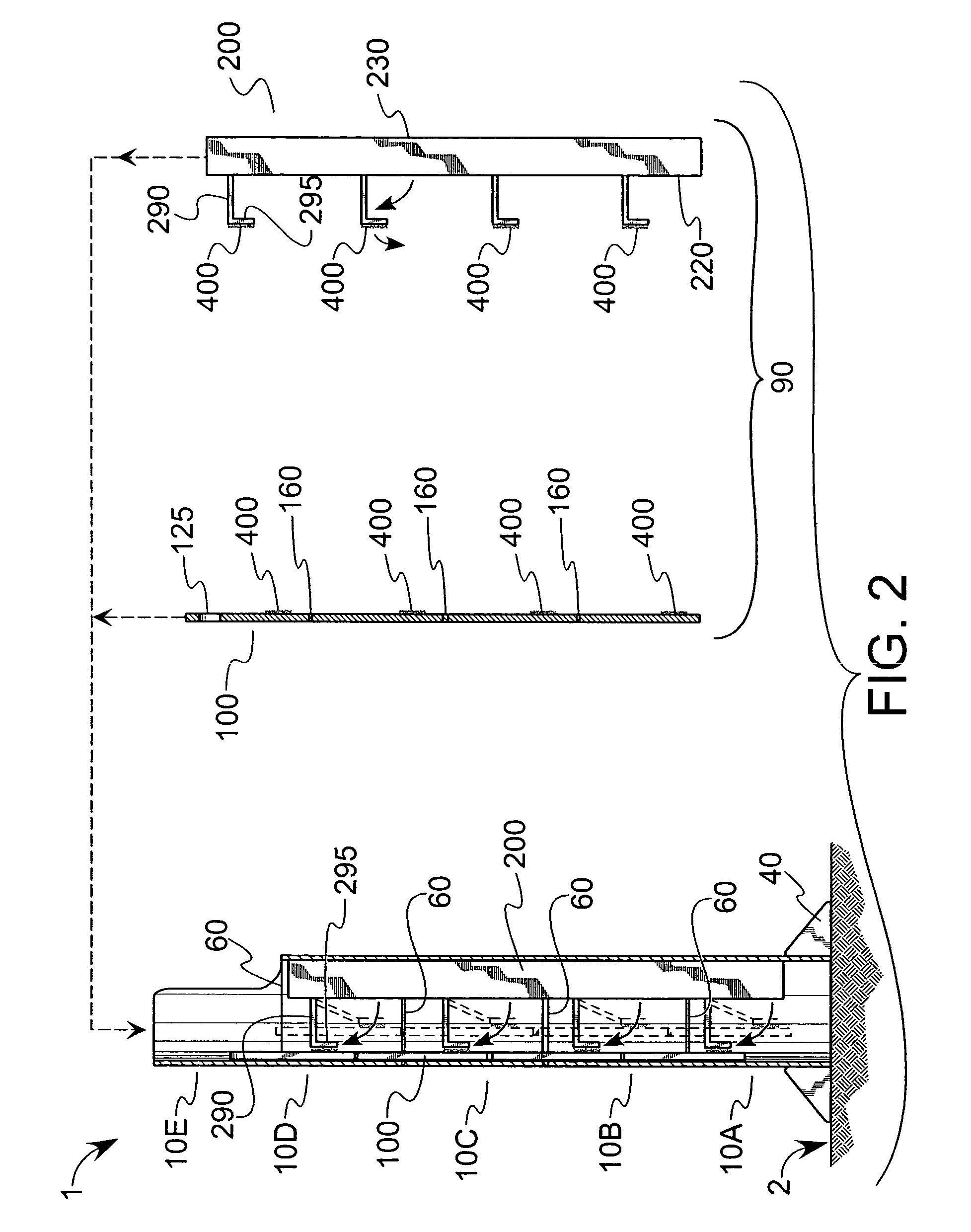Stand-up display
a stand-up display and display technology, applied in the field of stand-up displays, can solve the problems of increased display cost, unwieldy and expensive transportation, and the need for skilled assemblers, and achieve the effects of improving the effect of display, transporting, and facilitating storag
- Summary
- Abstract
- Description
- Claims
- Application Information
AI Technical Summary
Benefits of technology
Problems solved by technology
Method used
Image
Examples
Embodiment Construction
[0021]Referring first to FIGS. 1 and 2, front and side views respectively of an embodiment of the invention are shown, where a stand-up display 1 includes a front panel 10, a back panel 30 and an internal spinal member 90. During periods of use (i.e., display), optional feet 40 can be provided, extending in a generally horizontal direction from front and back panels 10, 30 to stabilize display 1 further. Although the display 1 is configured for free-standing operation without the need for the feet 40, there are situations where the use of feet 40 may be beneficial. For example, in areas where display 1 could be exposed to significant airflow (such as adjacent a heating, ventilating and air conditioning (HVAC) duct, or near a door or window), feet 40 can provide additional resistance to tipping. Longitudinal fold lines 50 are included to give rear panels 30 a faceted structure 20, while transverse (longitudinally-spaced) fold lines 60 are formed in the front, side and back panels to ...
PUM
 Login to View More
Login to View More Abstract
Description
Claims
Application Information
 Login to View More
Login to View More - R&D
- Intellectual Property
- Life Sciences
- Materials
- Tech Scout
- Unparalleled Data Quality
- Higher Quality Content
- 60% Fewer Hallucinations
Browse by: Latest US Patents, China's latest patents, Technical Efficacy Thesaurus, Application Domain, Technology Topic, Popular Technical Reports.
© 2025 PatSnap. All rights reserved.Legal|Privacy policy|Modern Slavery Act Transparency Statement|Sitemap|About US| Contact US: help@patsnap.com



